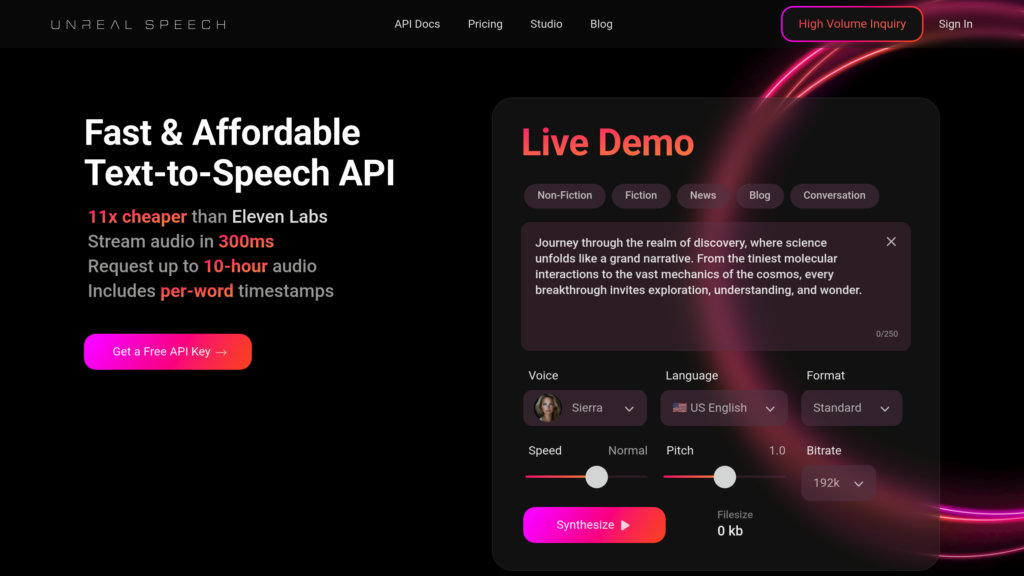Unreal Speech
Budget-friendly text-to-speech API with natural voice synthesis
Introduction
What is Unreal Speech?
Unreal Speech stands as an innovative text-to-speech solution powered by artificial intelligence, producing exceptionally natural voice outputs while significantly reducing expenses compared to market alternatives. It facilitates instantaneous audio delivery with minimal delay and presents diverse vocal selections spanning numerous languages. Designed with developers in mind, it ensures straightforward API incorporation and sophisticated customization capabilities including emotional tone, speech rate, and pitch control. This platform serves content producers, academic institutions, and enterprises by boosting interaction, inclusivity, and efficiency through adaptable voice technology.
Key Features:
• Economical Solutions: Priced up to 11x lower than industry leaders, democratizing premium TTS technology for various financial plans.
• Instant Audio Delivery: Achieves audio transmission in under 300ms, perfect for live implementations and smooth listener engagement.
• Diverse Vocal Library: Features 48 distinct voices across 8 linguistic varieties, encompassing different genders, age groups, and vocal characteristics.
• Precision Voice Tailoring: Enables detailed adjustment of speech elements like tempo, tonal quality, and inflection for customized audio results.
• Seamless Integration Framework: Offers dedicated interfaces for both streaming and synthesis, simplifying incorporation into digital products and services.
• Synchronization Tools: Provides word-level timing markers for accurate audio-text alignment, beneficial for captions and interactive media.
Use Cases:
• Digital Content Production: Transform written pieces like blogs and articles into captivating audio content for auditory learners.
• Educational Technology: Elevate learning resources with human-like narration to accommodate various educational approaches.
• Inclusive Design: Increase digital accessibility for visually challenged users by converting on-screen text to spoken word.
• Automated Support Systems: Equip AI assistants and chat systems with realistic voices for efficient customer service operations.
• Audio Publishing: Generate professional-grade audiobooks and multimedia projects with adjustable narration styles.
• Live Voice Applications: Leverage rapid-streaming technology for real-time voice services including public address systems and interactive hotlines.
